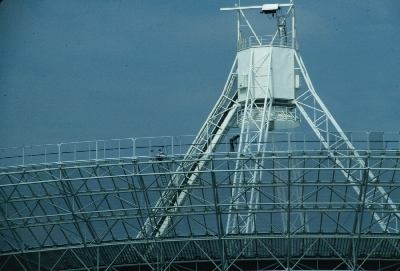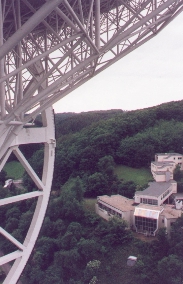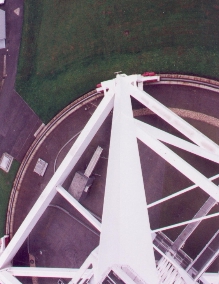Nestled in the volcanic hills and hollows of the Eiffel region in westernmost Germany, this is the largest fully steerable radio telescope (at least until the GBT is finished, which of course had to be just slightly larger). It's operated by the Max-Planck-Institute für Radioastronomie in Bonn. This instrument has had important roles in direct sky mapping, work on masers in star-forming regions and active nuclei, and as one of the anchors of the European VLBI network. The dual construction (solid inner dish and mesh outer annulus) allows work at reduced efficiency to the short wavelength of 3.5mm while giving a larger effective surface for centimeter bands. The telescope has been in service since 1972. This instrument can surprise tourists, even those of us deliberately trying to find it, because it is set in a depression, which helps reduce interference, but keeps it from standing out at any great distance.
This view of maintenance workers atop the dish, looking very small and distant, emphasizes just how big a 100-meter radio telescope is. There are some things you couldn't pay me to do, and this is one of them.

Well, pretty much. After writing the comments above, the chance came along at a meeting near Bonn to take a close-up tour of the 100-meter, which included climbing up to the receiver cabin at the prime focus. That still beats working on the edge of the dish, which slopes at a 45-degree angle so you need ropes to get around...
 |
 |
 |
Last changes: 08/2000 © 2000